It wasn't just the world's press that was feeling the temperature rise in Taipei this year at Computex 2024. What with many of the latest components pushing out huge amounts of heat, it was no surprise that we saw plenty of impressive cooling solutions built to match.
From chonky radiators to innovative (and not so innovative) heatsink designs, to entire rigs dunked in cooling fluid, we saw plenty of cooling systems and cases designed to keep Gen 5 SSDs, high-end CPUs and powerful graphics cards from throttling back under the thermal strain.
And as for aesthetics? Well, you've got your pick, it seems. Transparent water blocks, RGB, err, everything, and case designs ranging from the subtle and discreet to something that looks more suited to a scientist's lab than your desktop were all on display.
Below, I've rounded up some of the more interesting and unusual approaches to cooling we spotted at this year's show.
SSD heatsinks: Towers of power
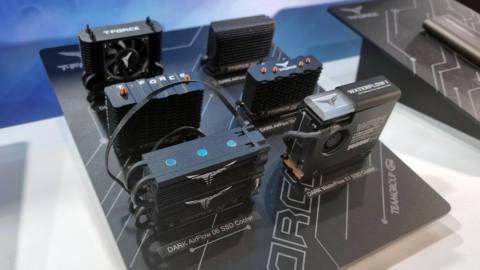
Plenty of Gen 5 SSD heatsinks were on display, in various form factors, shapes and sizes. Team Group had a selection of prototype designs at its booth, I suspect in a conciliatory effort to say “we know, we know, but we're working on it”.
One of which is particularly fun to play with, at the very least. The Dark AirFlow 06 SSD cooler is made up of modular heatsink units that can be magnetically clipped together, complete with a magnetic (optional) mini fan.
While I didn't get a chance to hear it running, I'd imagine that like most small, high-speed fan units, it creates quite the noise.
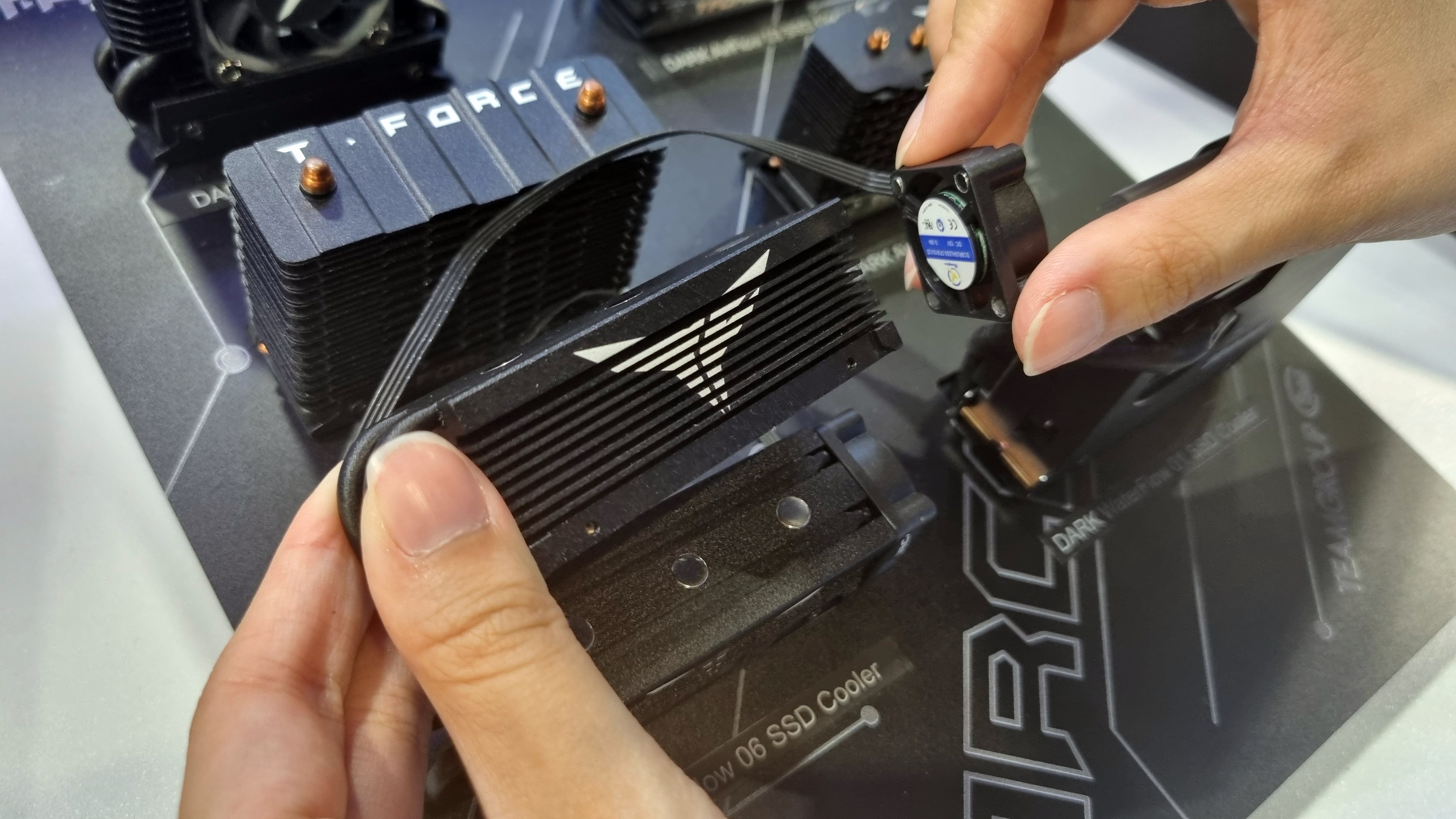
Still, as a desk toy? Top marks. As a practical cooling solution? The jury's out.
Tower SSD heatsinks were everywhere, something that still strikes me as a somewhat inelegant solution to a significant cooling and packaging challenge. However, one of the more intriguing, smaller solutions was at MSI's booth. A “non-metal vapour chamber” concept looked, from a distance at least, like it was more of an aesthetic choice than a new design.
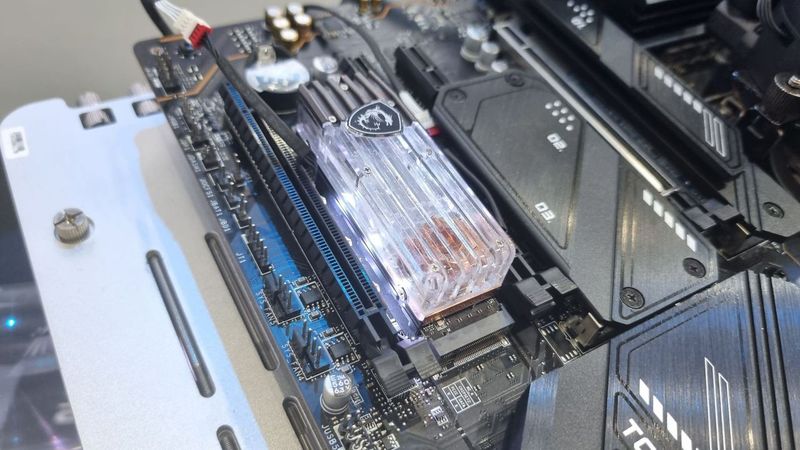
However, the cooler makes use of a “two-phase flow transition” of gas and liquid inside the transparent casing to beat the SSD heat. Whether this increases the efficiency of a smaller SSD cooler in comparison to a regular heatsink remains to be seen. That being said, it does look like a potentially promising solution in a small form factor, with a production version suggested for later this year.
Water cooling: Transparency and chonky rads
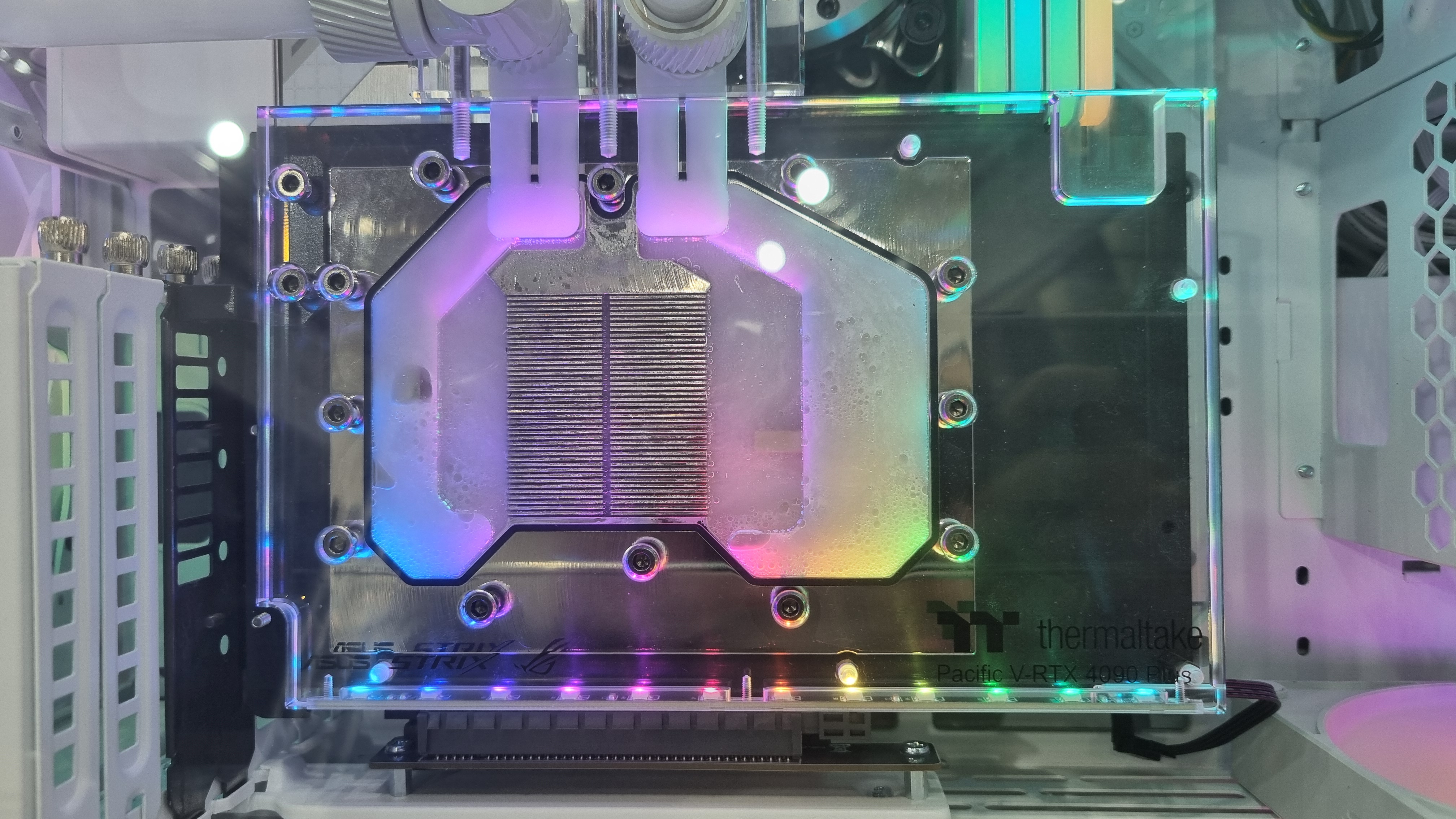
Speaking of see-through, while transparent water blocks and water cooling systems are nothing new, it did seem like many exhibitors were keen to show off just how much variation there can be in the designs.
There's a level of child-like joy in seeing exactly how cooling fluid is moving inside a block, although I could have done with less white-coloured fluid reminding me of Ash's milky android blood spraying up the walls, à la Alien.
Still, from steampunk-inspired reservoir tanks to oversized, Bioshock-reminiscent CPU cooling blocks, transparency was everywhere.
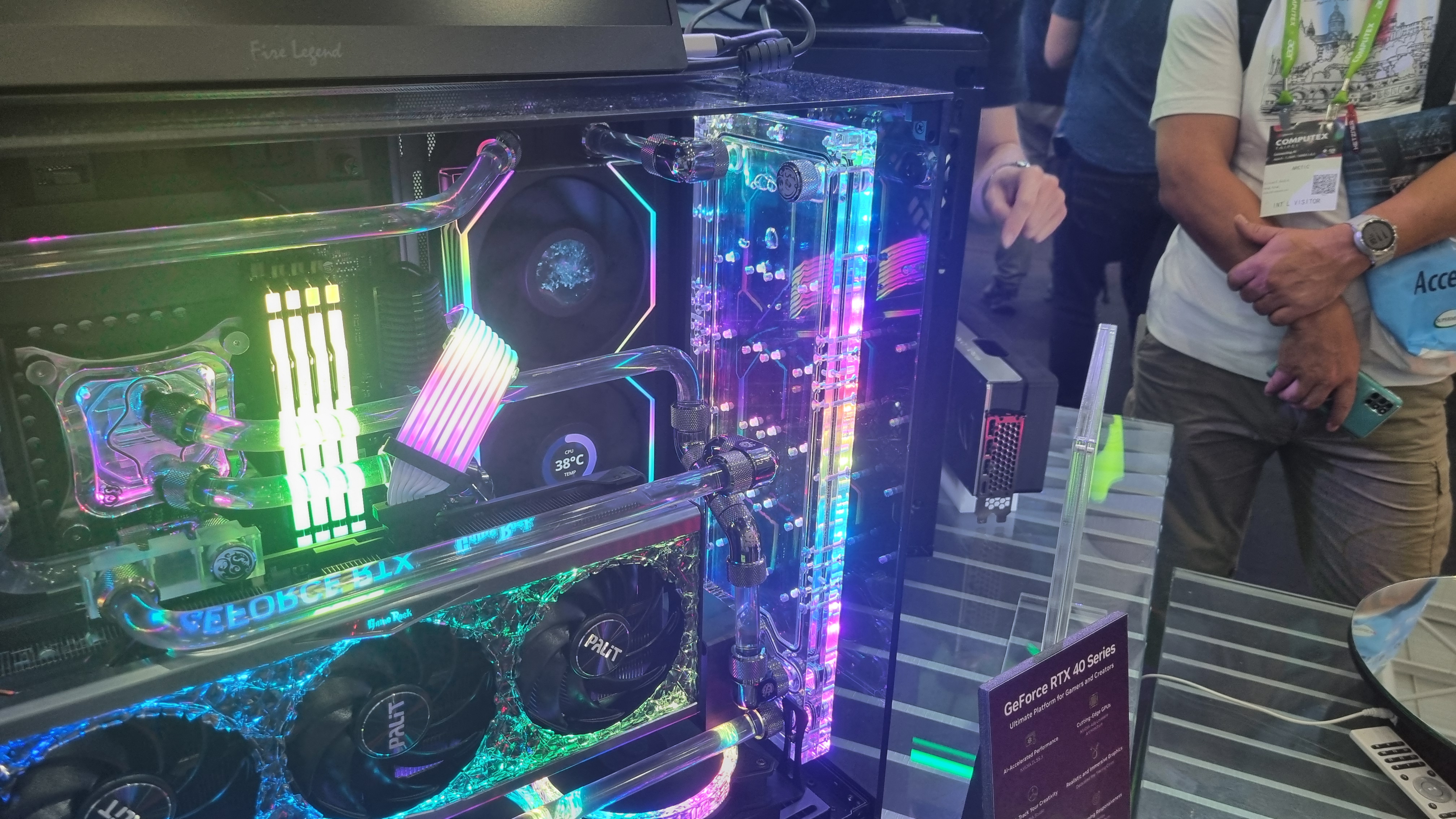
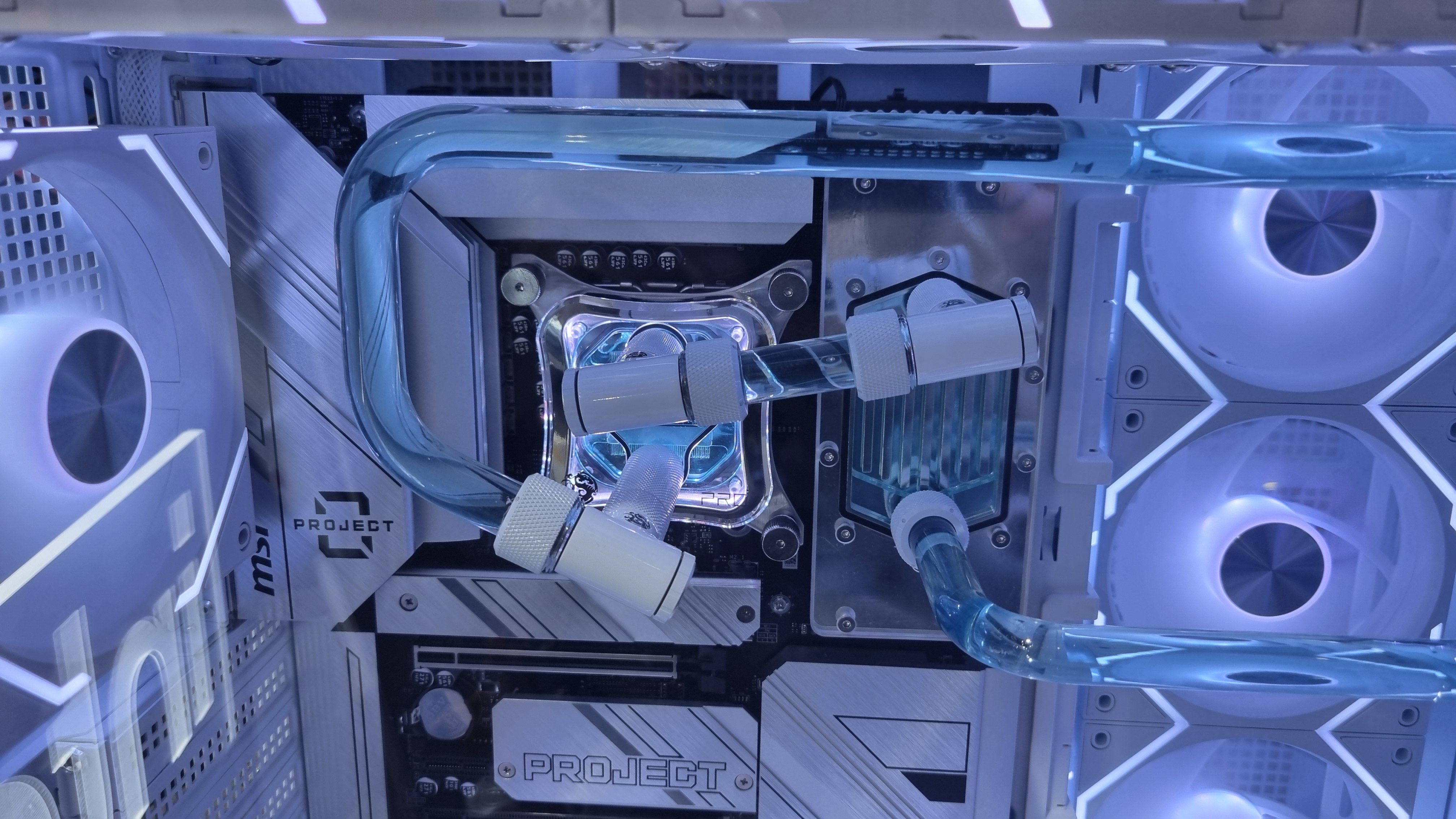

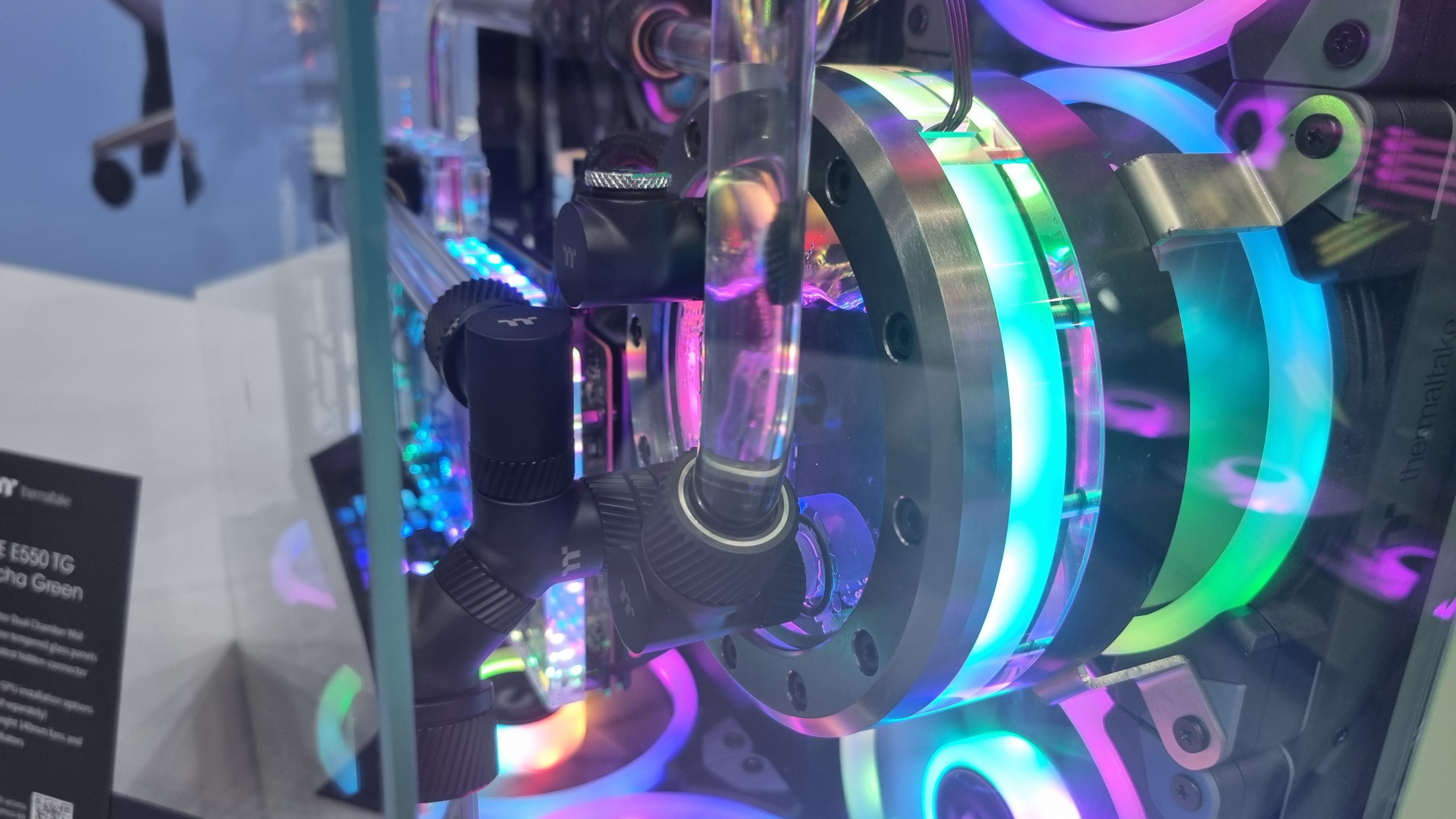
While there's a lot to be said for a cooling system that blends into the background, it was difficult not to be entranced by the greens, blues and pinks, flowing around various systems like an essential life force in a biological machine.
Entranced, or occasionally queasy. Again, white cooling fluid. Just say no.
While we're on the subject of water cooling, how about this for the most extreme example of radiator implementation I could find—the Corsair 9000D has room for not one, not two, not…ok, potentially four 480mm radiators.
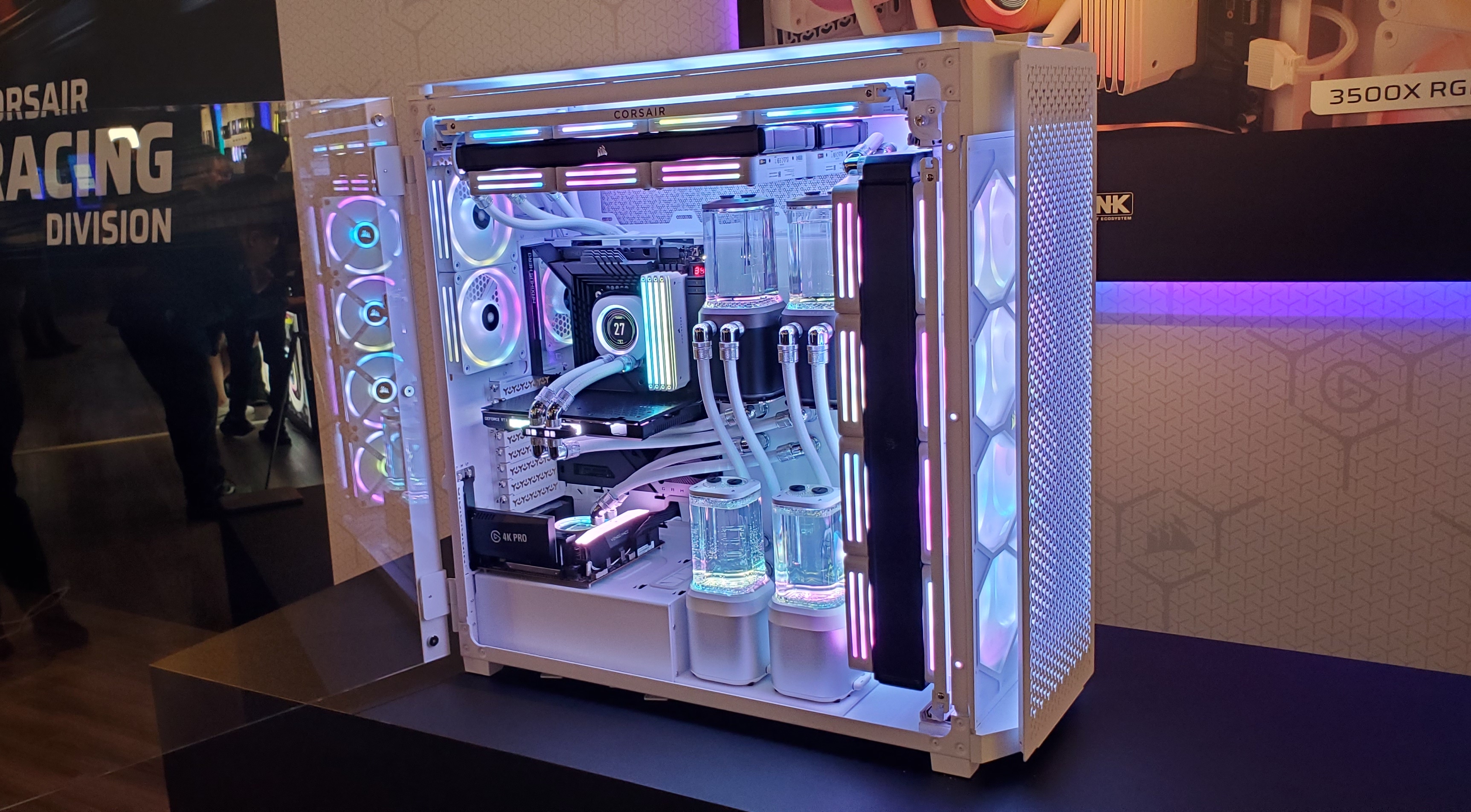
It also looks like it makes ice cream. Or maybe that's just me.
Still, I wonder if it has room for four of these. Hyte's new AIO CPU cooler claims to be the coolest and quietest ever, but it's also thick. How thick? Well, put it this way—it's spelt with two “c's”.
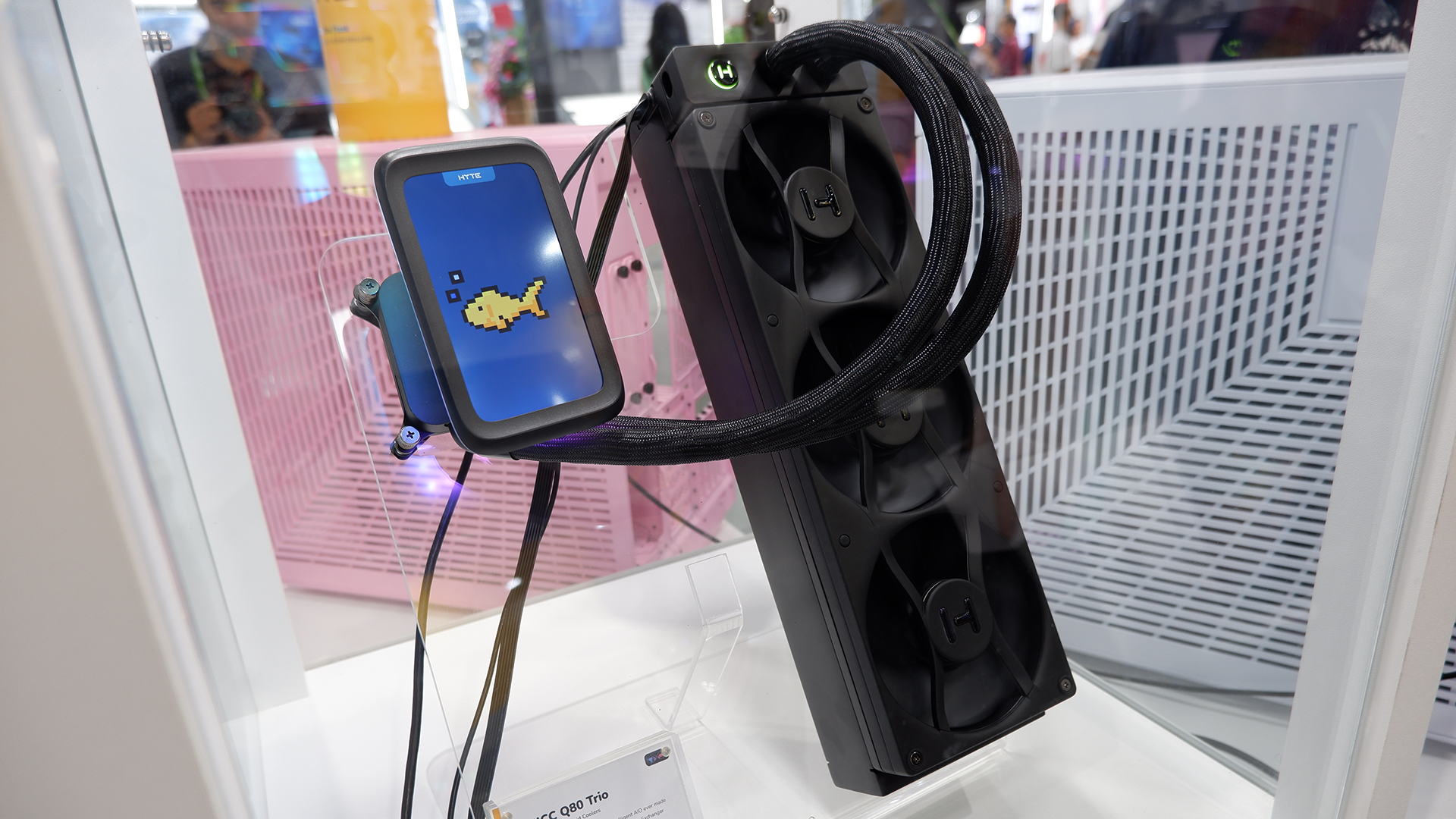
Watercooling ey? It seems there's no end to the possibilities, but leave it to Noctua to throw the cat among the pigeons. While the company doesn't currently make a liquid cooler, transparent or otherwise, it's working on a prototype unit that doesn't need a pump at all.
And as for the RGB, the transparency, the flashy effects? Well, it's Noctua. So, the final version will be mostly brown then. Probably.
Fans, fans, and more fans

AI PCs were, I'm sure you are aware, a big deal at Computex this year, especially for enterprise use. Many beastly rigs were on display, stacked to the rafters with multiple GPUs, inconceivable amounts of RAM, and chunky processors.
All that hardware in one case means a huge amount of heat. Which, in turn, means fans. Many, many fans.
That being said, for your average gaming PC user there were some interesting designs on display for cooling your home rig, too. Thermaltake's modular magnetic fan linking solution, the CT EX ARBG series, allows you to clip up to seven fans together with one cable. Complete with iridescent RGB, of course.
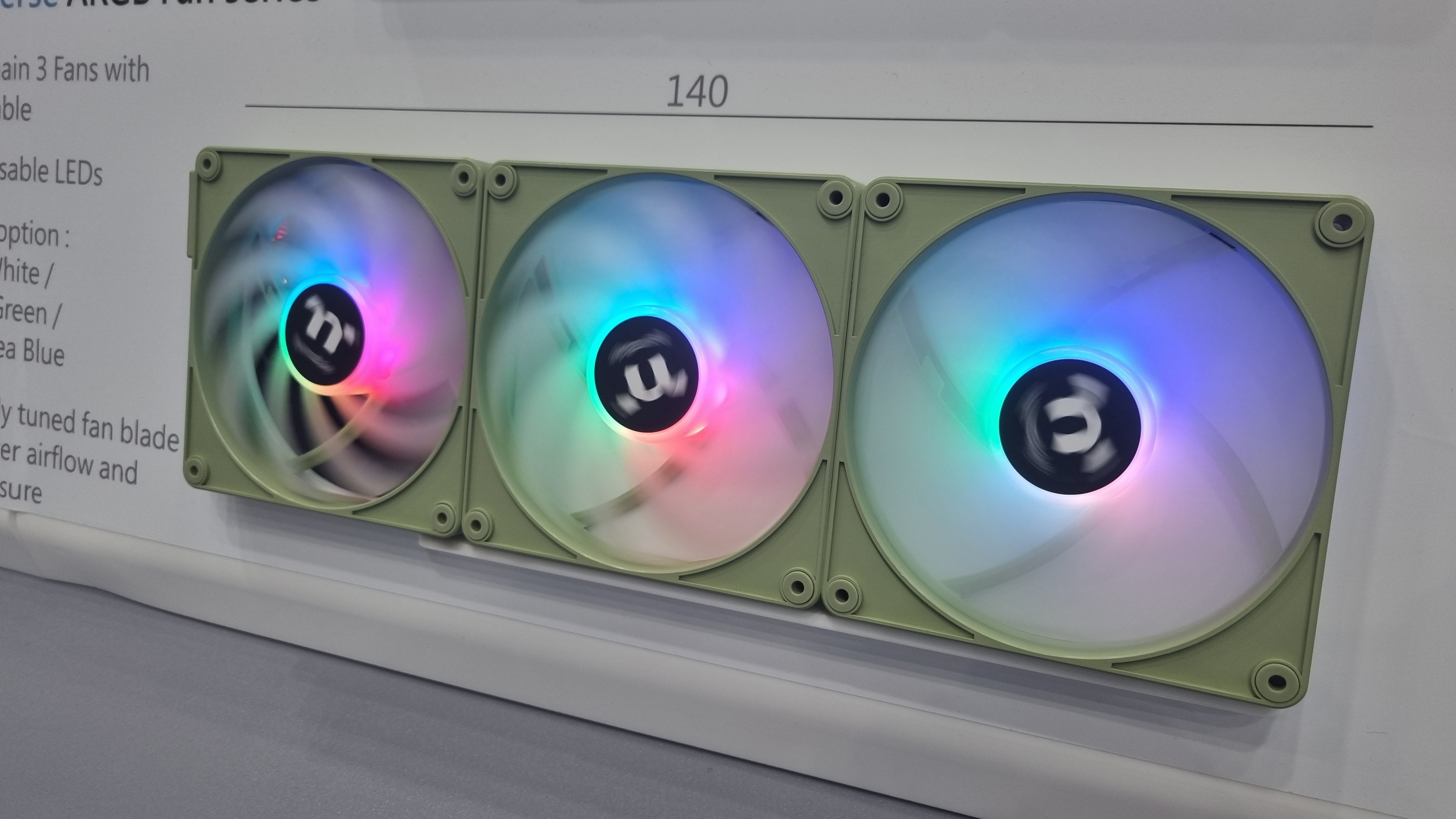

Also at Thermaltake were the Toughfan EX12 and EX14 Pro, two heavily-reinforced fans with magnetic connectors. While these are primarily designed for server and enterprise use, the heavily overbuilt design principles seem like a good fit for anyone looking for an air-mover that's designed to stay running year after year.
Having held the fan blades myself, I can say that they feel capable of cutting vegetables, too.
As someone that's been known to poke my hand inside a running rig and catch it on a spinning fan, I live slightly in fear of these reinforced models, but tough they certainly seem. Just watch those fingers.
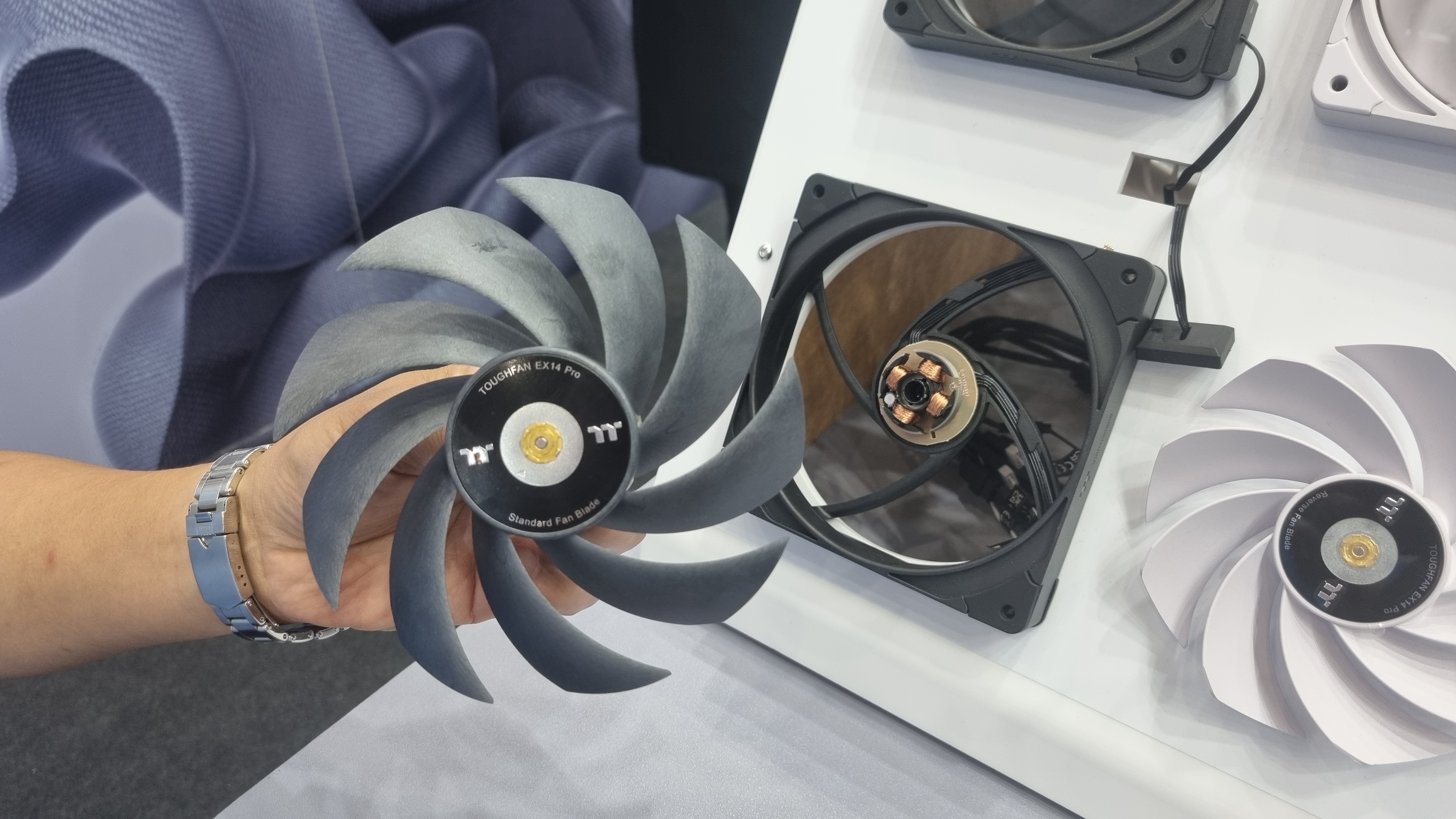
Here's something I didn't know I needed: A CPU heatsink fan clip that doesn't require those horrible, snappy metal springs to attach itself to the tower. I have sacrificed many a fingernail over the years to cooler clips, and the MAGAir 600 Ultra's easy clip-on design seems like a blissfully simple solution.
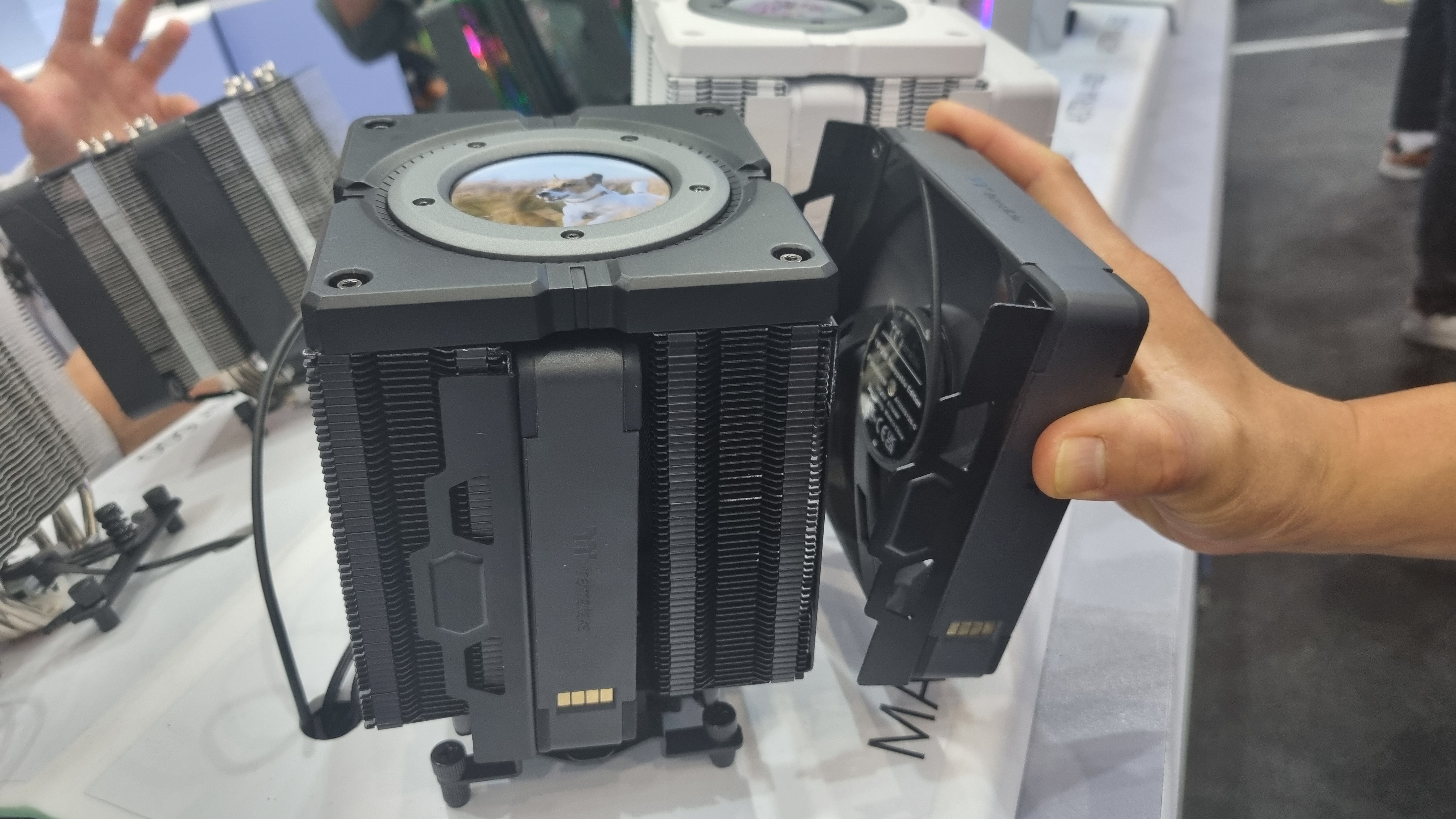
It's also got a removable LCD screen for showing temperature info, or pictures of your dog. Y'know, whatever you need a screen on your cooler for.
Nope, I can't quite think of another reason either. Moving on…
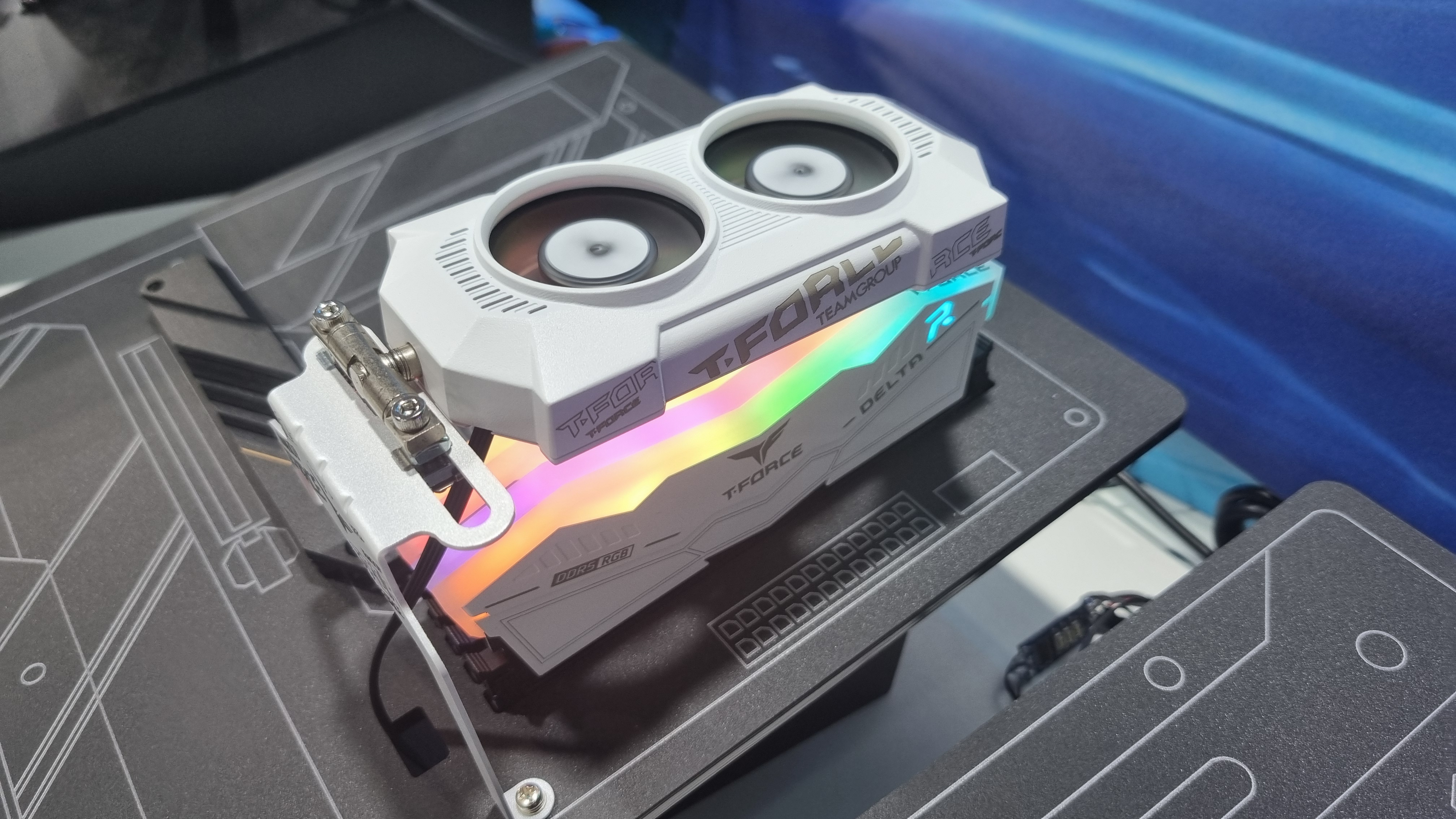
While we're on the subject of fans though, this Team Group RAM cooler is just….I still can't quite get my head around it. I'm all for high performance, but if my RAM is running hot enough that it needs a clip-on pivotable fan attachment, I may just call it a day and go for slow.
Water cooled GPUs

While most think of water cooling a GPU as a custom, jury-rigged sort of affair, I did come away quite impressed with the integrated solution in the MSI RTX 4080 Super 16G Expert Fusion. With a shroud that seemed mercifully discrete compared to some of the over-designed examples we've seen from some AIBs over recent years, the 16G Expert Fusion actually looks even better with its clothes off:
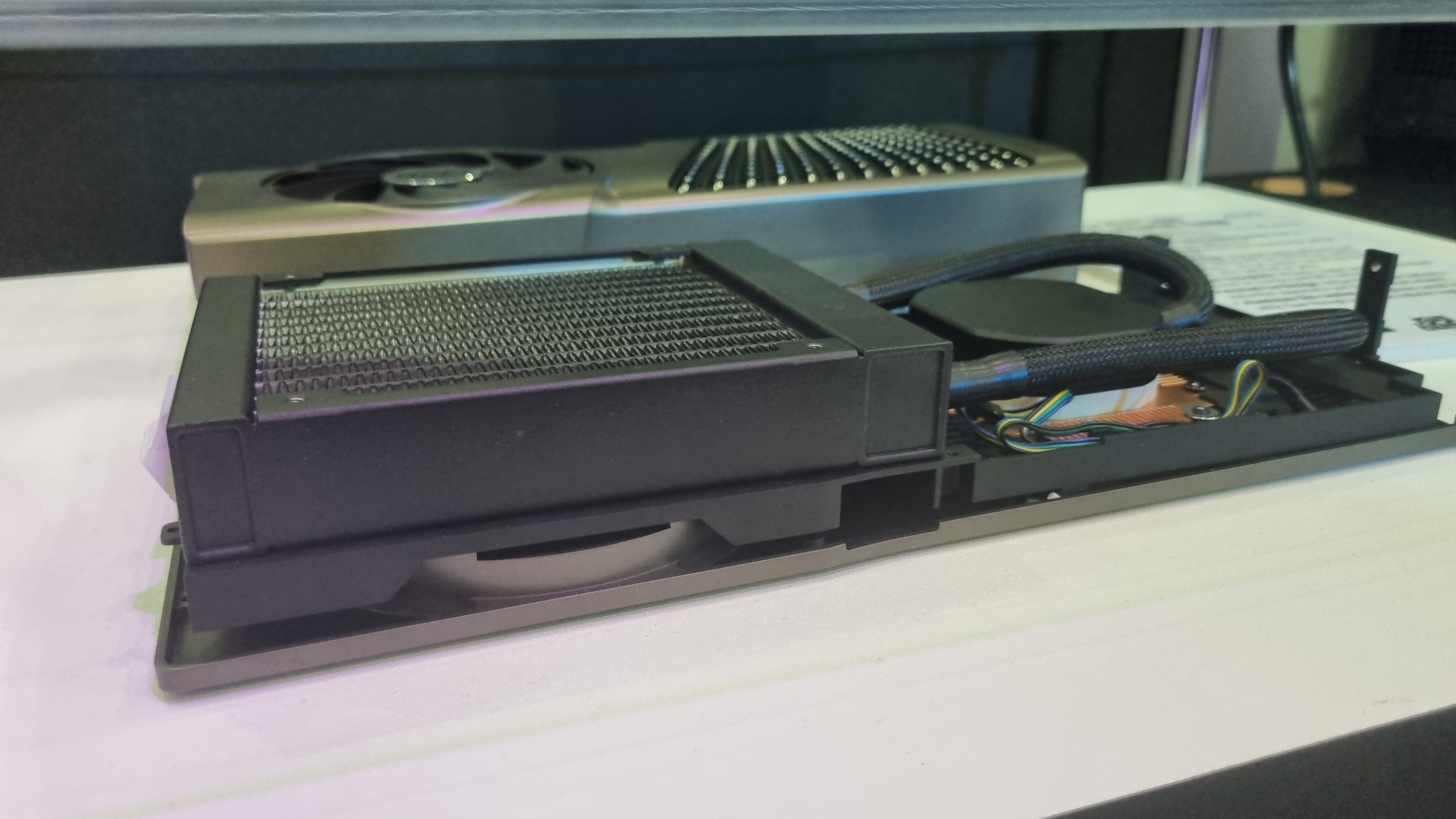
That being said, it wasn't all roses. The RTX 4090 24G Suprim Fuzion might try to capture the same effect, but there's no getting around the fact that the RTX 4090 is a card that seems to point-blank refuse to be shrunk down to a reasonable size.
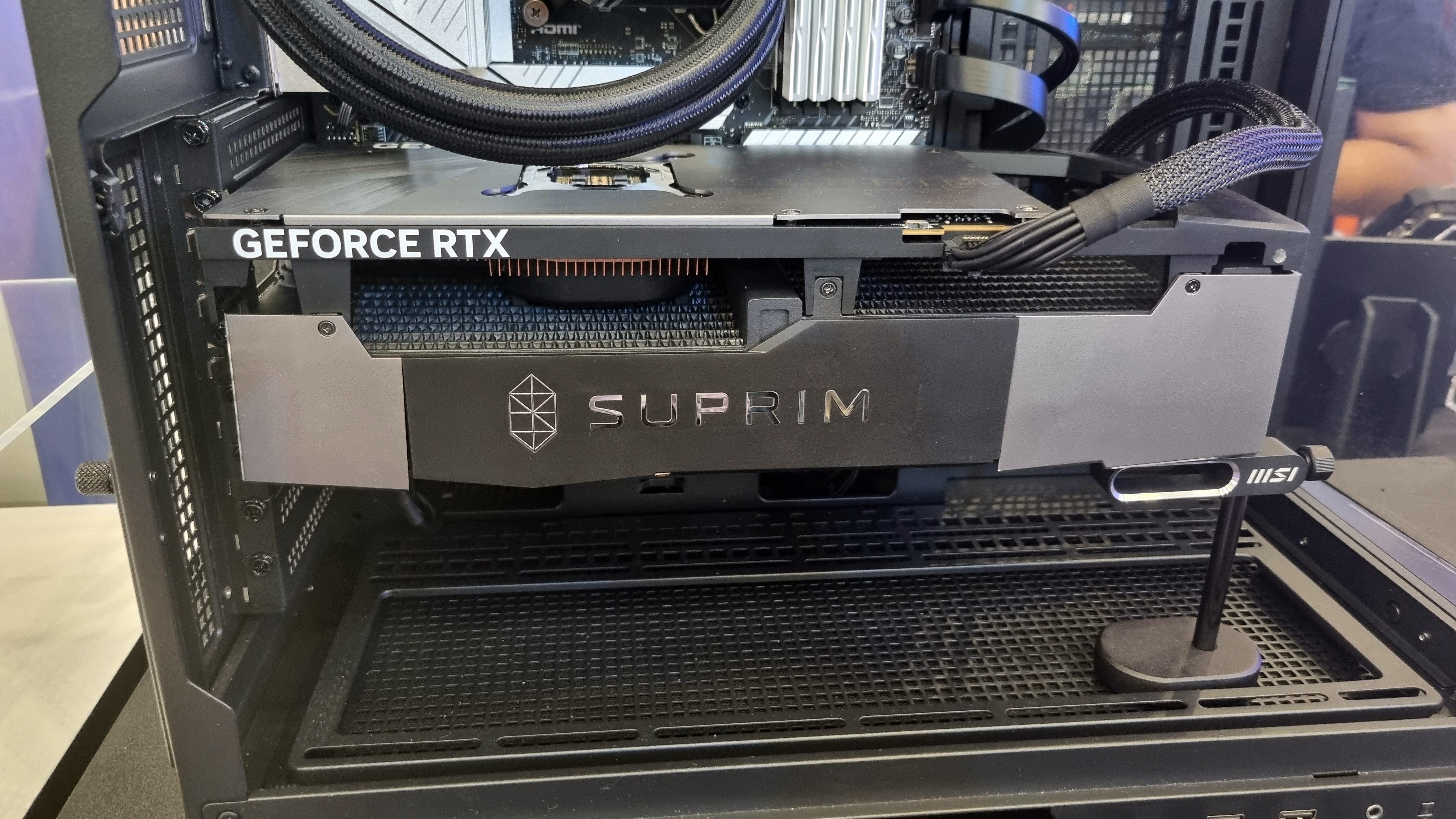
Yep, that's a little MSI anti-sag arm keeping all that bulk aloft. It's an impressive-looking thing, but one of the biggest card coolers I've ever seen.
Although, the hybrid air-cooled/liquid-cooled Palit GeForce RTX 4090 Neptunus certainly provides some tough competition. When one cooling solution is deemed not enough, I suppose the next step is, why not both?

Frore’s AirJet Mini Slim

Remember the Frore AirJet? A fanless solution to small form factor cooling that promised some excellent performance in a tiny frame, but seemed to suffer from a lack of adoption.
Well, Frore has since announced the AirJet Mini Slim, a thinner design with intelligent self-cleaning and the capability to optimise its performance based on the surrounding temperature.
I managed to get my hands on several of them at Computex, and had a good long chat with Frore's CEO about exactly why the AirJet has taken its time to show up in consumer products. I'll be publishing a piece covering all the highlights of our discussion in the next week or so, but what I can say is that while the AirJet Mini Slim might not be the future of all hardware cooling, the specific demonstrations I was shown were quite impressive.
Given all the huge cooling solutions on display, seeing something so tiny move a decent amount of air was a welcome change in pace.
Immersion case
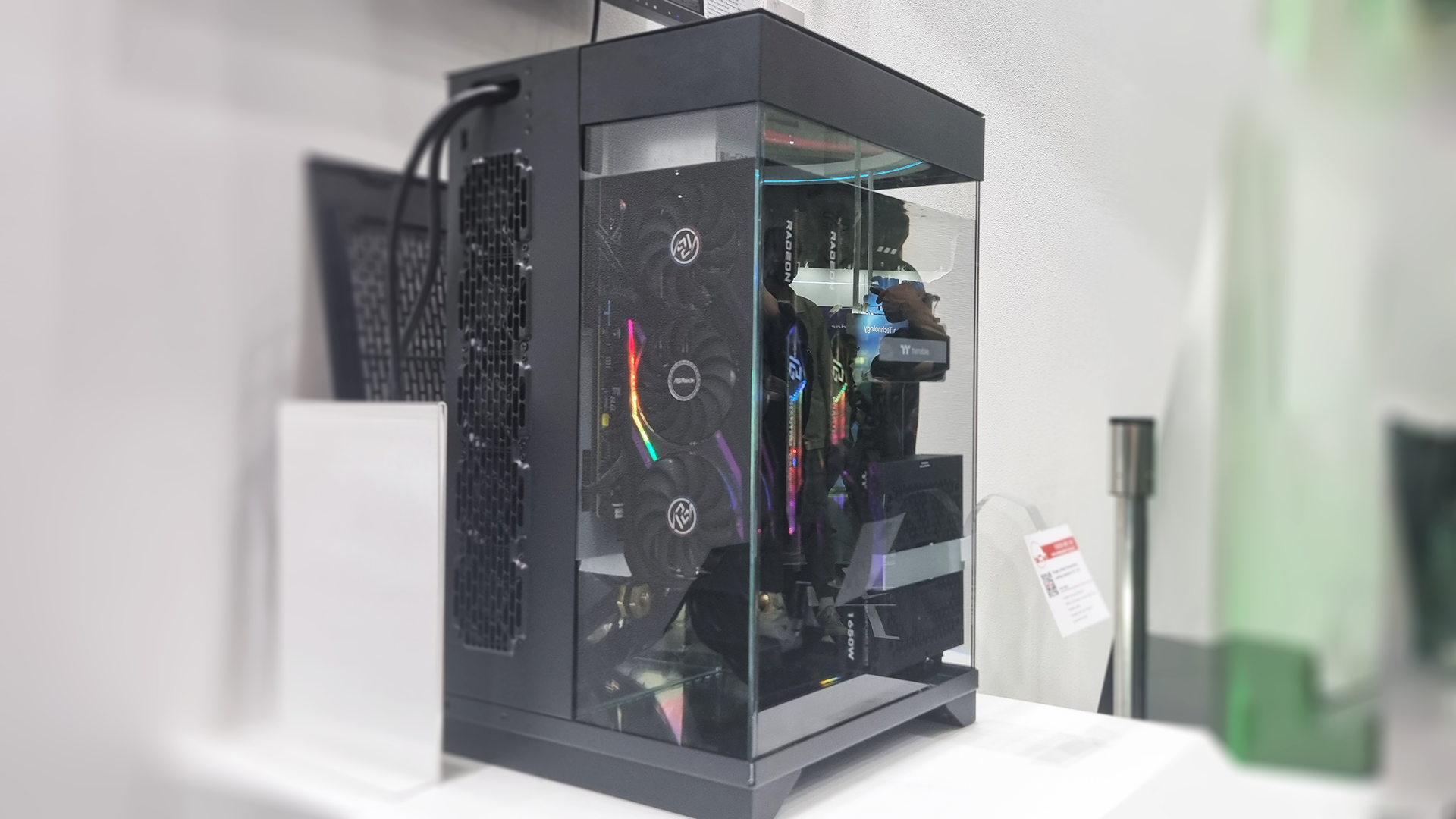
Y'know what they say: if in doubt, dunk the whole PC in fluid and call it a day. Ok, maybe they don't say that, but this Intel, ASRock and Thermaltake collaboration was a real crowd-pleaser this year.
Water cooling, taken to its extreme. While the temperature reduction is likely to be impressive, let's be honest, in practical terms this is all about the visual effect. Still, bubbling GPUs and inert CPU fans suspended in fluid seem at first glance to defy some basic laws of physics—although I don't think any of us will be immersing our home PCs anytime soon, no matter how stunning the result.
Size matters
While the Frore AirJet Mini above might be trying to keep things small, for everyone else, bigger seemed to be better. Huge radiators, massive water blocks, and fans that looked like they'd be better suited to hovercraft rather than PC internals were everywhere.
Palit though, may have taken the cake. For those of you complaining about the size of graphics cards like the RTX 4080 Super and the RTX 4090, well, try this one on for size:
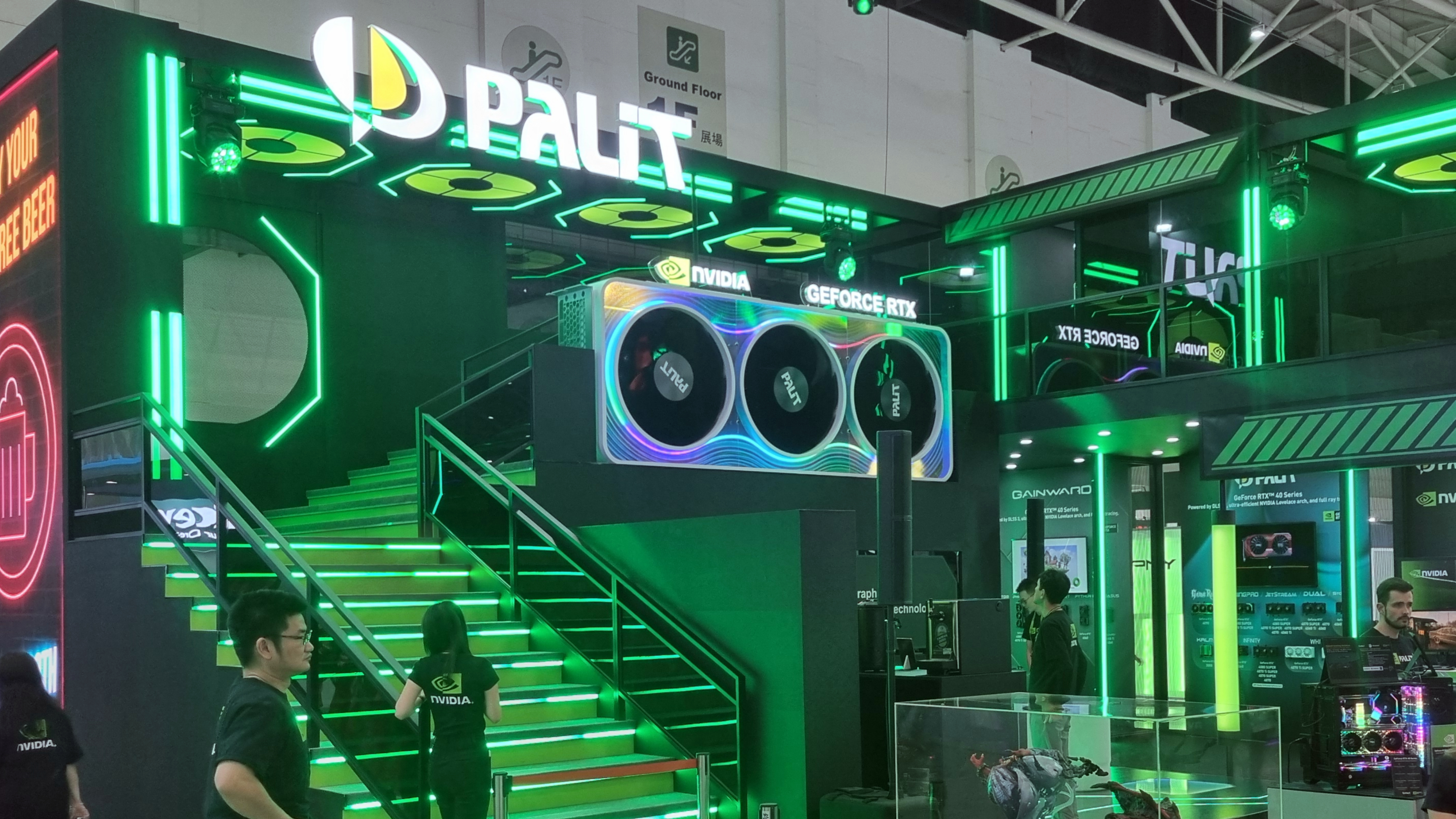
Yep, those fans were spinning. Of course, this is a display piece rather than a comment on the size of GPUs to come (I hope), but I can think of few things that sum up Computex 2024's cooling displays better than this. Big, bold, and occasionally, downright bizarre.
Now, if only someone had hooked up some fans to me, as I wandered the displays. Wearing jeans and a formal shirt to stalk the floors of the Nangang Exhibition Hall, was, in retrospect, a big mistake.
Next year, I think I'm going to turn up with some personal cooling hardware of my very own. Water cooled hardware writers. Now that's an innovation I can get behind.






